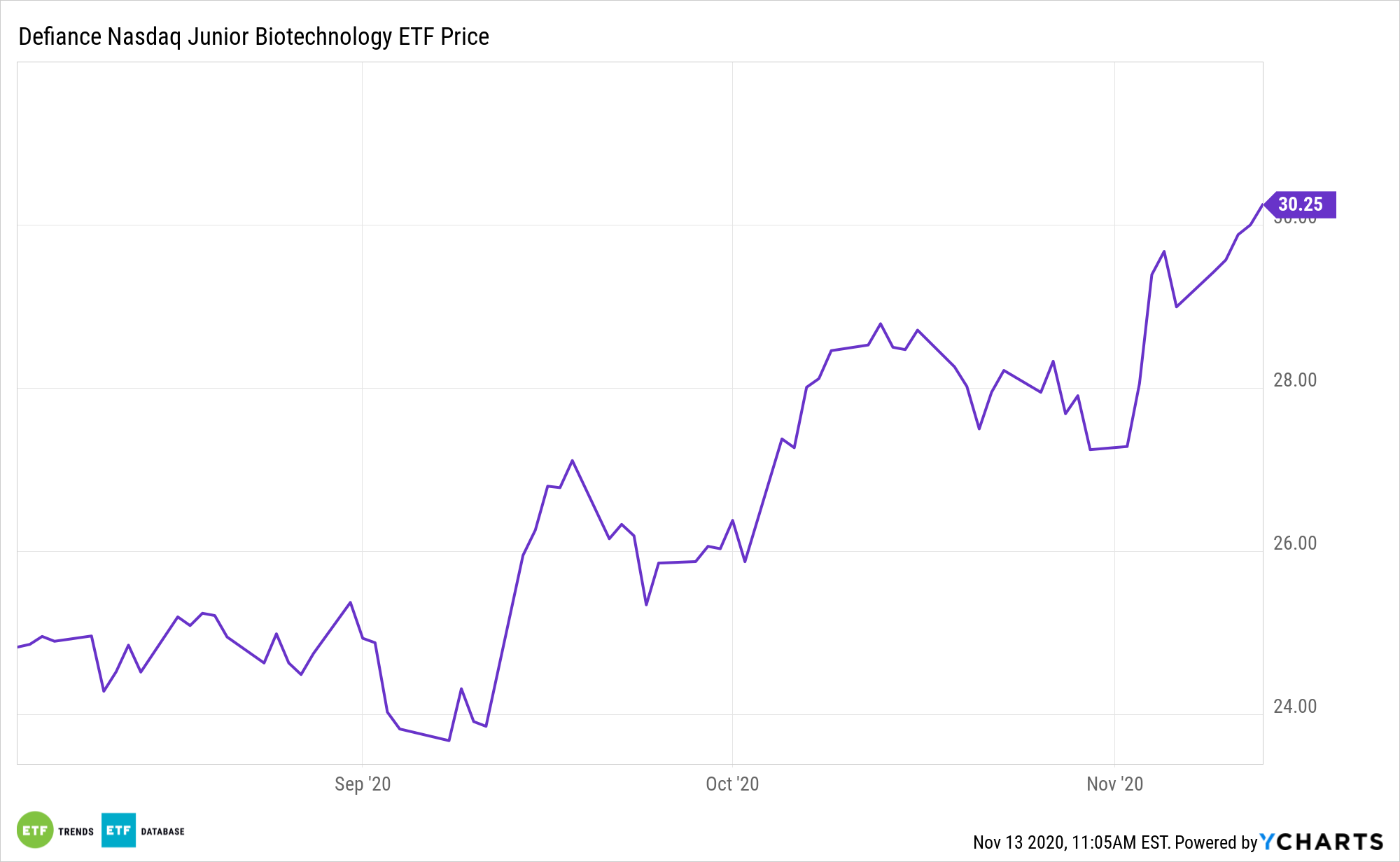The Defiance Nasdaq Junior Biotechnology ETF (IBBJ) is just a few months in, but it’s already asserting itself in the biotechnology exchange traded funds arena, one teeming with competition.
IBBJ tracks the Nasdaq Junior Biotechnology Index (NBIJR), which is home to nearly 180 stocks. The benchmark caps components’ market value at $5 billion at the time of inclusion.

IBBJ’s member firms “are “engaged in biotech research and development, the sale or licensing of biological substances for the purposes of drug discovery and diagnostic development; and pharmaceutical manufacturers of prescription or over-the-counter drugs, including vaccines and development and manufacturing companies,” according to Defiance.
Data confirm IBBJ is off to an impressive start. The fund is higher by 20.83% since inception compared to a 1.53% gain for the large-cap Nasdaq Biotechnology Index, according to Defiance.
IBBJ Shooting Upwards
A primary benefit of IBBJ is that the growth fund is chock full of companies that emphasize research and development, which is critical to success in the biotechnology arena. In fact, IBBJ components are more R&D intensive than the large-cap names found in the Nasdaq Biotechnology Index (NBI).
IBBJ member firms must also be members of NBI in addition to not exceeding $5 billion in market value at the time of inclusion.
IBBJ covers companies around the globe that are focused on various areas within the biotech or pharmaceuticals space. Included companies are those involved in genomics, DNA technology, genetic engineering, and molecular biology, as well as pharmaceutical manufacturers of prescription or over-the-counter drugs. Its emphasis on pharmaceuticals makes IBBJ different from some peer funds and its segment benchmark. The underlying index concentrates its exposure to approximately 200 small-cap stocks that are exclusively listed on the NASDAQ Stock Market. Stocks selected must meet certain size and liquidity requirements. The index is market-cap weighted with an 8% single security cap for five securities, and the excess is allocated proportionally across the rest. The index’s rebalance, and reconstitution occurs semi-annually.
If the aforementioned outperformance of NBI by IBBJ held true over the course of a year, the gap would be astounding.
“Annualized 2020 Return Since IBBJ’s Launch is 100.87% vs Nasdaq Biotech TR Index 5.77%,” notes Defiance.
For more on innovative portfolio ideas, visit our Nasdaq Portfolio Solutions Channel.
The opinions and forecasts expressed herein are solely those of Tom Lydon, and may not actually come to pass. Information on this site should not be used or construed as an offer to sell, a solicitation of an offer to buy, or a recommendation for any product.

